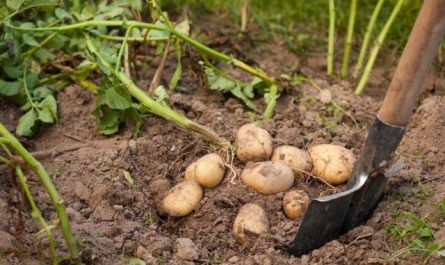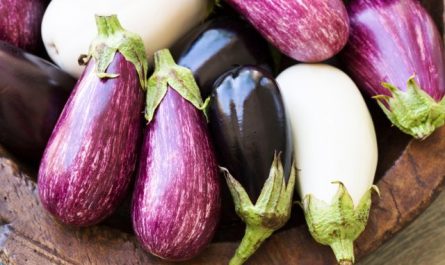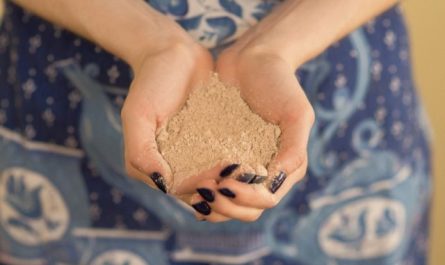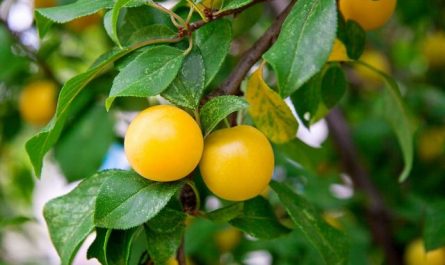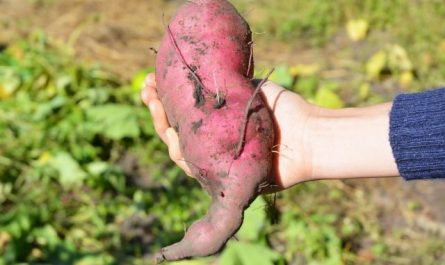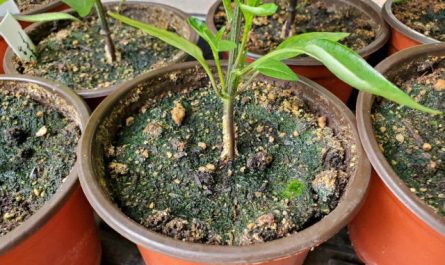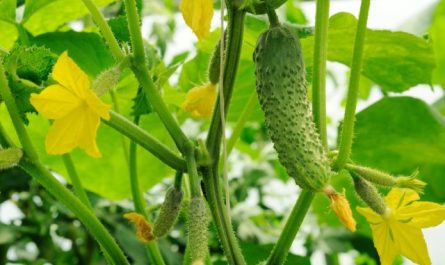For many gardeners, adding interesting new items to the assortment of traditional vegetables and fruits is a fun way to not only grow interesting products for the dinner table, but also to get some health benefits from them. One of the new interesting crops that I recently tried to grow is purple potatoes. How are purple potatoes different from traditional ones and what are their health benefits? I will tell you about my experience of growing one of the varieties of purple potatoes in this article.

What is a purple potato like?
Purple, or purple potatoes have such an exotic appearance that they look like “food from another planet.” But in fact, they have quite earthly origins. This crop has ancient roots and originated in South America thousands of years ago. To this day, such potatoes remain a staple food for the local population, but today many varieties of purple potatoes have begun to be grown all over the world.
In general, purple potatoes are not the result of genetic engineering, but a plant obtained by crossing light varieties of potatoes with a South American wild plant that naturally has purple tubers. Currently, more than 20 varieties of purple potatoes are known.
These potatoes are basically very similar to their white counterparts, except that they have a beautiful purple skin and purple flesh. Varietal and hybrid varieties of purple potatoes vary from solid burgundy flesh to purple patches on a light background of varying intensity. The taste of these potatoes is described as “soft, earthy, slightly nutty.”
Advantages purple potatoes compared to traditional ones:
- has high resistance to diseases;
- an ideal plant for a decorative garden;
- increased content of vitamin C.
Disadvantages:
- high cost of planting material;
- not available for sale everywhere;
- relatively low yield.

Useful properties of purple potatoes
Purple potatoes are not only an original crop with an interesting appearance, they also have numerous useful properties. Regardless of the variety, purple potatoes contain a valuable antioxidant called anthocyanin, which is responsible for the bright purple color of the plants (this is the same type of antioxidant found in blueberries and blackberries).
For humans, anthocyanins help reduce the risk of cancer, cardiovascular disease, and stroke. This antioxidant protects cells from harmful free radicals, improves vision and eye health.
In addition, purple potatoes are low in fat and rich in vitamins and minerals, such as potassium (more than bananas) and iron. The tubers also contain fiber, which helps regulate the digestive system. Purple potatoes contain a large amount of vitamin C, with its levels being 3 times higher than those of traditional potatoes.
Another undeniable advantage of purple potatoes is their low starch content, which makes them a dietary product suitable for people with diabetes. In addition, the glycemic index (GI) — a measure of how much a product increases blood sugar levels — is lower for purple potatoes than for regular potatoes. A comparative study showed that purple potatoes have a GI of 77, while white potatoes have a GI of 93.
Other beneficial substances found in purple potatoes include carotenoid compounds, selenium, tyrosine, polyphenolic compounds, caffeic acid, scopolin, chlorogenic and ferulic acids.
One study in the US, which involved men who ate 150 grams of different coloured potatoes every day for 6 weeks, found that the purple potato group had lower levels of inflammatory markers and DNA damage markers compared to the white potato group.
Purple potatoes are also beneficial for people with hypertension. According to research, the polyphenolic compounds in purple potatoes work to lower blood pressure in a similar way to some types of antihypertensive drugs.



How to cook purple potatoes?
Purple potatoes have very thin skins, so there is no need to peel the potatoes before or after cooking. Because blue potatoes have a soft, moist texture, they are best baked, boiled, or fried. However, purple varieties are not as good for making French fries as potatoes with a high starch content.
Purple potatoes pair well with herbs, garlic, pork, poultry, and soft cheeses. You can also mash them or make a hearty purple soup. Because they are low in starch, purple potatoes do not overcook or become too crumbly, making them a good all-purpose base for a variety of fillings that hold their shape during cooking.
Features of growing purple potatoes
The process of growing purple potatoes is very similar to the process of growing any other variety. First, you need to choose a place for this crop and begin preparing the soil. The soil for planting potatoes should be well-drained. A bed filled with compost will provide the crop with available nutrients.
Regardless of the variety, potato bushes require frequent hilling. Hilling can be done with either soil or straw mulch. This technique ensures that the tubers forming underground do not turn green from exposure to the sun.
Purple potatoes also need treatments against the Colorado potato beetle. Apart from periodic hilling and spraying, the process of growing potatoes is generally not particularly labor-intensive. With regular watering, even novice gardeners can grow abundant harvests.


My impressions of growing the Chudesnik potato
“Chudesnik” is a variety of potato with purple flesh and a uniform dark purple skin. This variety is an achievement of Russian breeders and was developed by employees of the Ural Research Institute of Agriculture under the leadership of Elena Shanina. The “Chudesnik” potato is the only purple variety that has high immunity against fungal diseases. It is also well suited for growing in the rather cold Russian climate. It has a particularly high level of vitamin C. Unlike many varieties of purple potatoes, it does not become colorless after cooking.
The bush has strong spreading foliage, the leaves are green with a purple tint, the flowers are white. The tubers are round or oblong, slightly flattened, with intermediate or shallow eyes. The skin and flesh are purple. The Chudesnik variety is mid-season, the harvest can be collected 60-90 days after planting the tubers. The yield is low.
I grew this variety using the technology of regular potatoes, in beds, next to traditional varieties. It also required additional feeding, hilling, watering and protection from the Colorado potato beetle. The first thing I really liked about this potato was the appearance of its tops. The stems and foliage of the purple potato were so unusual and attractive that I wanted to grow it as an ornamental plant in combination with annual flowers.
The stems of the Chudesnik potato were dark purple and looked almost black. The young leaves of this potato were dark purple, but as they grew, they turned green. At first, they had purple marks on a green background, after which the older leaves became completely green, but the petioles retained a dark anthracite color. Thus, on one bush, one could observe variegated foliage throughout the season.
When the “Wonderflower” blossomed, it surprised me even more. The petals of its flowers were crystal white, and the stamens, collected in the form of a cone, had black and yellow stripes. It seemed as if a bee had landed on the flower, and at the base of the stamens on the petals there was a large brown-yellow star. Although it is often recommended to pluck the inflorescences of flowering potatoes, I felt sorry to pluck such beauty, and the blue potato blossomed very abundantly.
We harvested the Chudesnik at the end of August. It is difficult for me to judge the harvest, since I planted the variety with microtubers, which in the first year give a small harvest of small tubers. The Chudesnik potatoes were dark purple, almost black. But when cut, its flesh was not at all uniform, like beets, but had a frequent purple pattern on a white background.
During cooking, the potatoes only became a little lighter, but the purple hue was basically preserved in the boiled tubers (it is noteworthy that the water in which the potatoes were boiled, for some reason, turned noticeably green).
As for the taste, unfortunately, I can’t say that it was brighter than that of regular potatoes. Rather, on the contrary, its taste seemed peculiar to me. It was different from the usual, but not for the better for me. Most likely, the “Chudesnik” lacked that slightly sweetish flavor that some varieties of potatoes have that I consider tasty. The purple potatoes, instead, had a slightly bitter flavor. But, in principle, when added to soup, such features are not critical.
So far we have tasted only a few tubers of the Chudesnik potato, the rest we left for seeds. Next year we hope to try this variety better.







